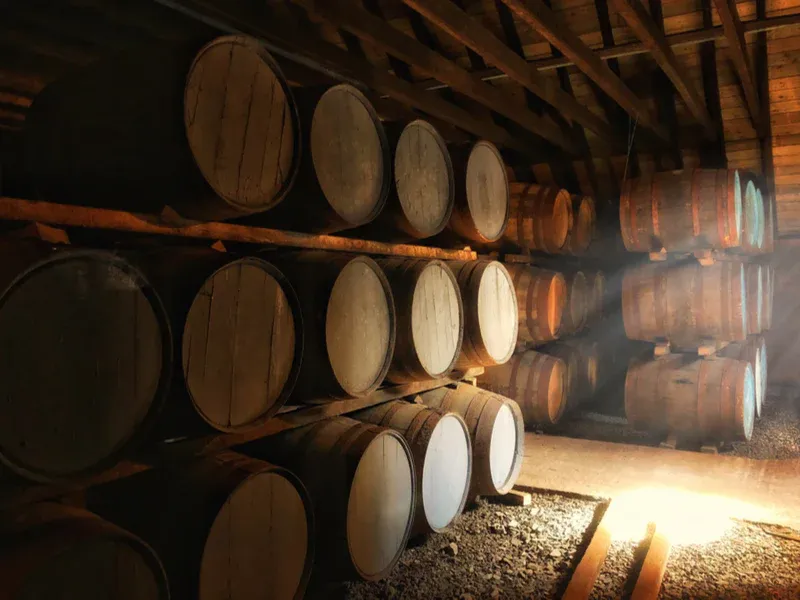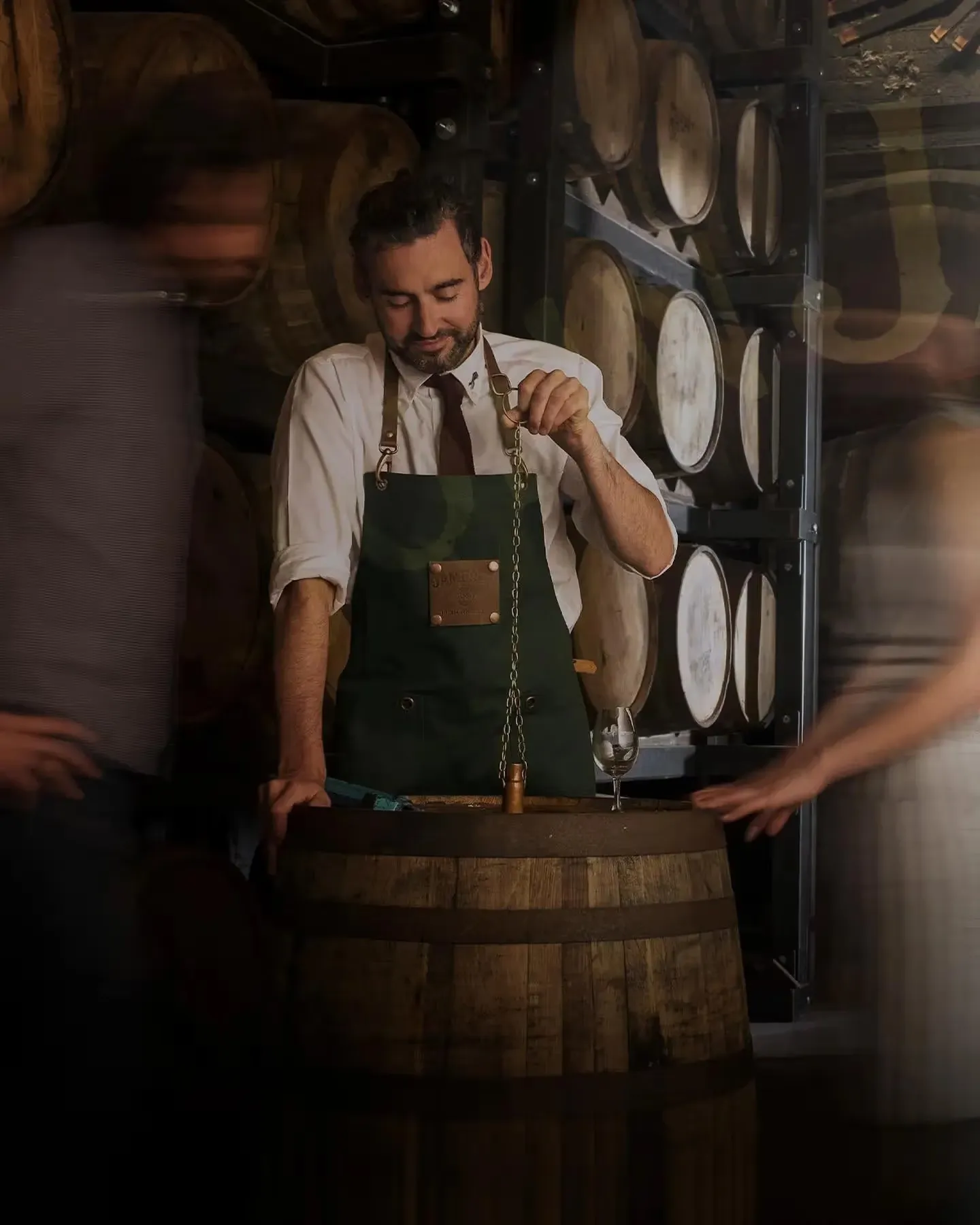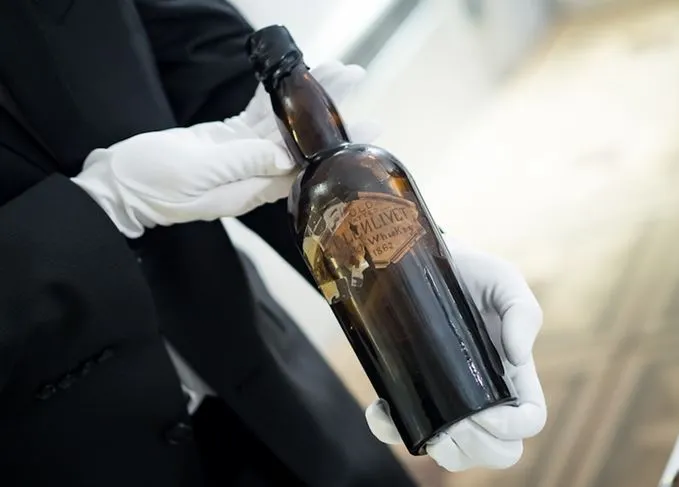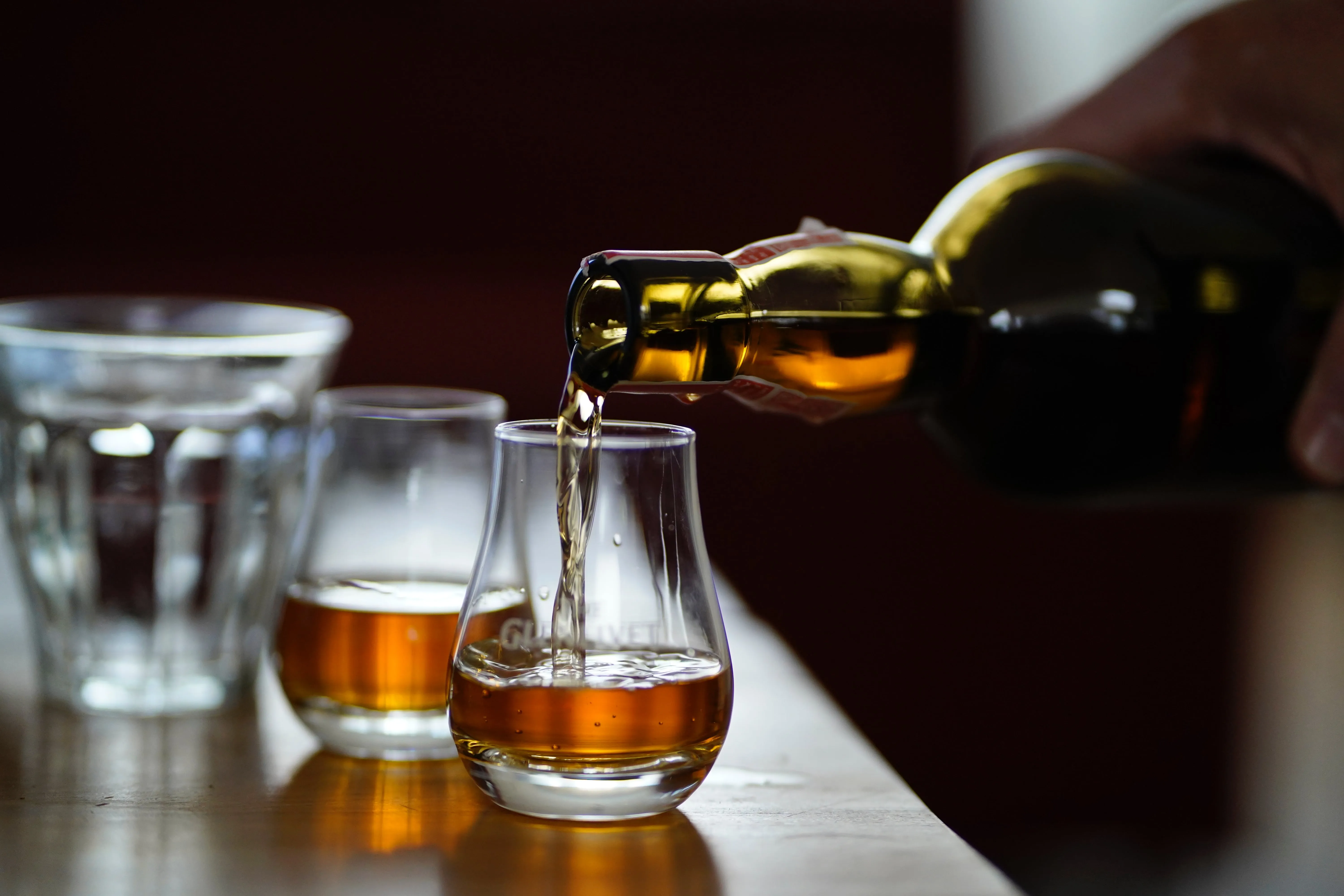Does whiskey age in the bottle? The straightforward answer is no. Unlike wine, whiskey does not continue to mature or develop new flavors once it’s bottled. The complex aging process, where whiskey extracts compounds from wood casks, happens solely during its time in the barrel. Once transferred to glass, the spirit essentially remains chemically stable, though environmental factors can sometimes cause subtle changes over very long periods.

Table of Contents
Core Answer: Does Whiskey Age in the Bottle?
The short answer is no—whiskey does not continue to age once it’s inside the bottle. Real aging, the kind that deepens and refines the spirit’s character, happens exclusively in the wooden cask. This is where the interaction between the whisky, the oak, and a small amount of air allows complex flavors to develop over time.
Once the whiskey is transferred to glass, that evolution comes to a halt. The wood, which played such an essential role in building flavor and texture, is no longer part of the equation. So while a whisky might sit on a shelf for decades, it won’t gain any of the rich, oaky depth we typically associate with maturation.
What Does Happen to Whiskey in the Bottle?
After bottling, whiskey is essentially paused in time. However, that doesn’t mean it’s completely immune to change—especially once the bottle is opened. Exposure to air can lead to oxidation, which may slightly alter the flavor profile. Some people feel this can soften the whisky or mute certain notes, though many enthusiasts and experts agree that this shouldn’t be considered actual “aging.” In most cases, oxidation simply leads to a gradual loss of aroma and intensity.
Beyond oxidation, other factors like evaporation, heat, and light can also affect the whisky’s quality. That’s why proper storage matters—keeping bottles upright, away from direct sunlight and big temperature swings, helps preserve the whisky as the distiller intended.
In the end, the age statement you see on a bottle reflects the time the spirit spent maturing in wood. A 12-year-old scotch will always be a 12-year-old scotch, whether you drink it now or twenty years from now. Any changes that occur post-bottling are usually signs of the whiskey fading, not improving. So enjoy it when you open it—it’s not getting any better with time.
My Best Practices for Storing Whiskey Bottles
Whether you’re looking to preserve the flavor of an open bottle or protect a sealed collector’s item, how you store your whisky makes a real difference. Good storage isn’t complicated—it’s mostly about keeping things consistent and avoiding a few common mistakes.
Guidelines for Sealed Whiskey Bottles
Always store sealed whiskey bottles upright. Unlike wine, whiskey has a high alcohol content that can degrade the cork over time if the bottle is laid on its side, potentially affecting taste and creating leaks. It’s best to keep your bottles somewhere with a stable temperature—ideally between 15–20°C (59–68°F). While some collectors prefer an even tighter range, avoiding big swings matters more than hitting an exact number.
Humidity plays a supporting role, too. You’ll want a moderate level, around 60–70% relative humidity, to keep corks from drying out without encouraging mold growth on labels or packaging. And perhaps most importantly, protect your whiskey from light—especially direct sunlight and UV rays, which can break down compounds in the spirit and fade labels. A dark cabinet or closet is perfect. Lastly, don’t store whiskey in the fridge or freezer for the long term. Cold temperatures can dull flavors and sometimes make the whiskey turn cloudy.
After You Open the Bottle
Once a bottle is opened, air becomes the main opponent. Oxidation can slowly mute the aromas and complexity of the whiskey over time. To slow this process down, try to minimize the air space in the bottle—especially once it’s down to its last third. Many people transfer the remaining whiskey into a smaller glass container to reduce oxygen exposure. Storing opened bottles in a cool, dark place (around 15–18°C) helps maintain their character. For even greater protection, some enthusiasts use wine preservator spray (inert gas) or tight-sealing caps.
Special Situations & Advanced Tips
For serious collectors, controlling the environment is key. A dedicated cabinet with mild humidity control (around 60–70% RH) and steady temperatures between 16–18°C offers ideal conditions. Always store bottles upright, and if you’re displaying them, make sure the cabinet glass is UV-filtered or that bottles are kept in the dark when not on view.
If you’re short on space—like in an apartment—look for storage spots away from heat sources (like the kitchen) and sunlight. Closets or enclosed shelves work well. And remember: when a bottle gets low, moving it to a smaller container is one of the simplest and most effective tricks to keep it tasting fresh.
What to Avoid
A few missteps can quickly undermine good storage habits. Never store whiskey bottles on their side—it risks cork damage and leaked whiskey. Avoid sunny windowsills, spots near heaters or vents, and areas with big temperature swings like attics or garages. Steer clear of decorative decanters with ill-fitting stoppers unless you’re serving soon—they often let in too much air. And again, skip the refrigerator or freezer for long-term storage.

“Aging” Whiskey at Home: What Works and What Doesn’t
Home whiskey aging kits claim to quickly add depth and complexity to spirits, but it’s useful to understand their limits. While they can introduce woody flavors, they don’t truly replicate traditional barrel aging.
Many kits include charred oak staves or spirals that are placed inside a bottle. Within weeks, these impart vanilla, color, and tannins—but since the bottle is sealed, there’s no evaporation or oxygen exchange, key elements of real aging. Tasting frequently is essential to avoid over-oaking.
Small barrels (1–5 liters) offer more wood contact and allow some evaporation. They work faster—often yielding drinkable results within 3–6 months—but can easily become bitter if left too long. Tasting every few weeks helps catch the right moment.
Some enthusiasts use Glass Jars with oak pieces and slightly vented corks. This low-tech method takes much longer—often 10 to 36 months—and involves occasional shaking. It’s less predictable and requires patience.
All these methods accelerate wood flavor extraction through surface area, heat, or agitation. But they can’t reproduce the slow ester development and gradual softening that occur over years in a full-sized cask. The result is often a wood-forward spirit that lacks balance and nuance.
Key Numbers and Legal Rules for Whiskey Aging
When it comes to aging whiskey, a few key numbers and regulations shape how spirits develop and how they’re labeled. Whether you’re new to whiskey or deepening your knowledge, understanding these basics offers useful insight into what’s inside the bottle.
Different countries set their own minimum aging requirements. In Scotland, whisky must be matured for at least three years in oak casks—a rule that’s been strictly upheld since 1915. Ireland also requires three years in wooden casks no larger than 700 liters. Similarly, Canadian whisky must be aged a minimum of three years in small wood barrels entirely on Canadian soil.
Australia and New Zealand set slightly shorter minimums, with each requiring at least two years in wood to be labeled as whisky. In the United States, the rules are more varied. While there’s no minimum age for general “whiskey,” straight whiskey and bourbon must be aged for at least two years in new charred oak barrels. If it’s less than four years old, the age must appear on the label. Bourbon also can’t enter the barrel at higher than 125 proof.
Age statements on bottles usually fall within common ranges—5, 10, 12, 15, 18, or 21 years—reflecting how long the whisky was matured before bottling. Many bourbon producers age their core products for at least four years, which often aligns with Bottled-in-Bond standards or higher quality expectations.

My Advice for Whiskey Collectors: Flavor, Aging, and How to Buy
Choosing and storing whiskey wisely comes down to understanding where its flavor truly comes from—the cask. Unlike wine, whiskey doesn’t improve once it’s bottled. All the magic happens during its time in the barrel, where it absorbs character from the wood and interacts with the air. Whether you’re new to collecting or looking to refine your approach, keeping a few key ideas in mind can make all the difference.
Focus on Barrel Time, Not Bottle Time
A whiskey’s color, aroma, and texture develop while it rests in oak—not in the glass. The aging process relies on the spirit expanding into and out of the wood with changes in temperature, which simply can’t happen once it’s sealed in a bottle.
Most whiskeys follow a general flavor arc based on time in the cask. Between two and four years, you can expect lighter, grain-forward notes with soft vanilla. From five to ten years, deeper flavors like caramel, oak, and spice begin to balance out. Beyond ten or twenty years, wood influence becomes much stronger—sometimes overpowering—with a risk of bitterness if left too long.
Climate plays a huge role, too. In warmer places like Kentucky or Tennessee, whiskey matures faster, often developing rich profiles in just 8 to 12 years. Cooler climates like Scotland or Ireland allow slower, more gradual maturation, often yielding nuanced whiskies best at 15 years or beyond. Even within a warehouse, barrel placement matters—upper floors experience greater temperature swings, accelerating extraction.
What to Look for When Buying
When selecting a bottle, it helps to look beyond the label and consider how the whiskey was made. Details like the type of oak (American vs. European), the cask’s previous use (ex-bourbon, sherry, wine, etc.), and the level of toasting or charring all shape the final flavor.
Age statements offer a useful clue to maturity, but they’re not a guarantee of quality. Some of the most memorable pours come from barrels chosen for character, not just time. Producers who share details about their cask selection and warehouse conditions often deliver more interesting and consistent products.
It’s also worth remembering that longer aging isn’t always better. Especially in warm climates, whiskey can become over-oaked and astringent if left in the wood too long. A higher age statement might be impressive, but it doesn’t automatically mean a better drinking experience.
Storing Your Whiskey the Right Way
A sealed bottle of whiskey is essentially stable—it won’t evolve, but it won’t degrade either if stored properly. The main goals are to avoid heat, light, and air. Store bottles upright to keep the cork from drying out or interacting with the high-alcohol liquid, and keep them in a cool, dark place with steady temperatures.
Once opened, whiskey slowly begins to oxidize. Lighter aromas may fade, while oak and spice can become more pronounced. For the best flavor, it’s recommended to enjoy bottles within several months of opening. If the whiskey level drops below one-third, consider transferring it to a smaller container to limit air exposure.
Unlike wine, whiskey doesn’t “breathe” in a beneficial way after opening. What you tasted on day one is essentially what you’ll get—so drink up and share.
Great whiskey is made in the barrel, not the bottle. Learning to recognize the impact of cask type, aging environment, and maturation time can make you a more confident collector. Choose bottles from producers who value transparency. Appreciate whiskey for what it is when you open it—not for how long it sat on your shelf.

Summary
While the romance of a dusty old bottle on the shelf is appealing, the truth is that whiskey’s journey of maturation ends at the moment it is bottled. The complex interaction between spirit and wood, the gentle oxidation, and the angel’s share are all gifts of the cask—not the glass. A bottle’s role is not to continue aging, but to protect and preserve the character that years in the barrel have already created. That’s why the quality of the bottle itself matters. At TP Glass Bottle Manufacturer, we specialize in producing high-quality glass bottles that offer superior UV protection and airtight seals, ensuring the whiskey inside tastes exactly as the master distiller intended—whether you open it next month or in the next decade. So, enjoy the whiskey for the story its aging tells, and trust the right bottle to keep that story perfectly preserved.

